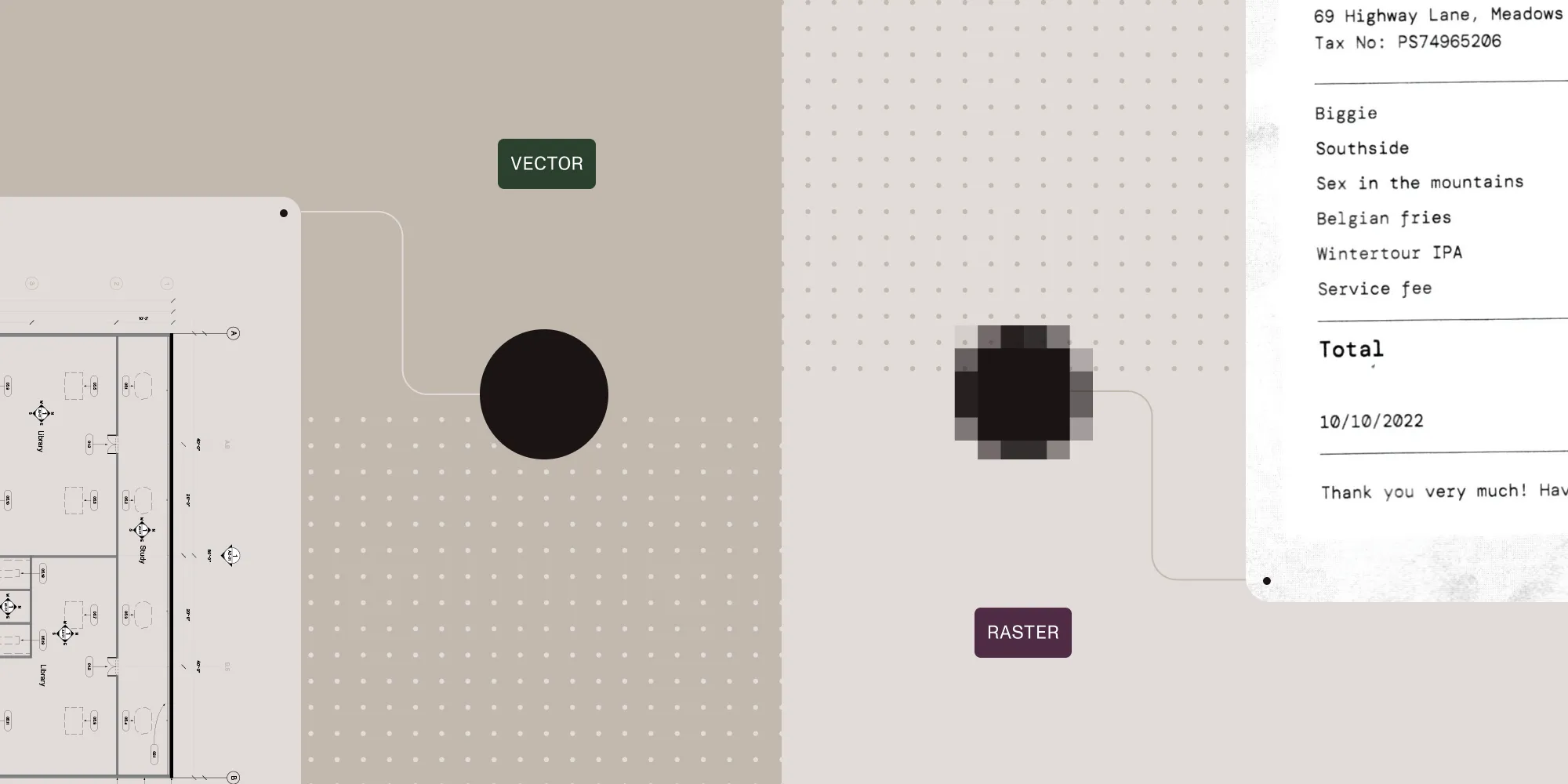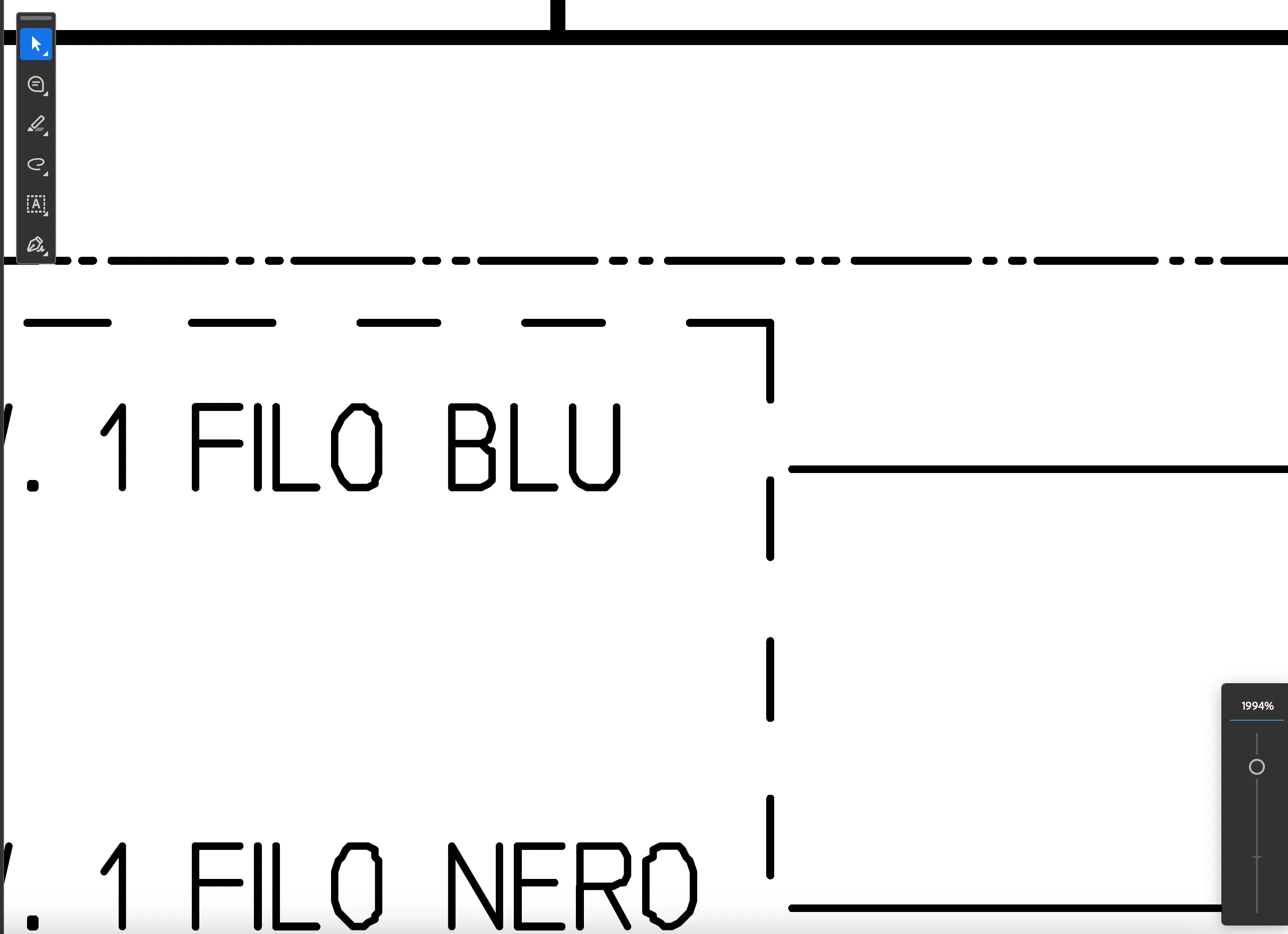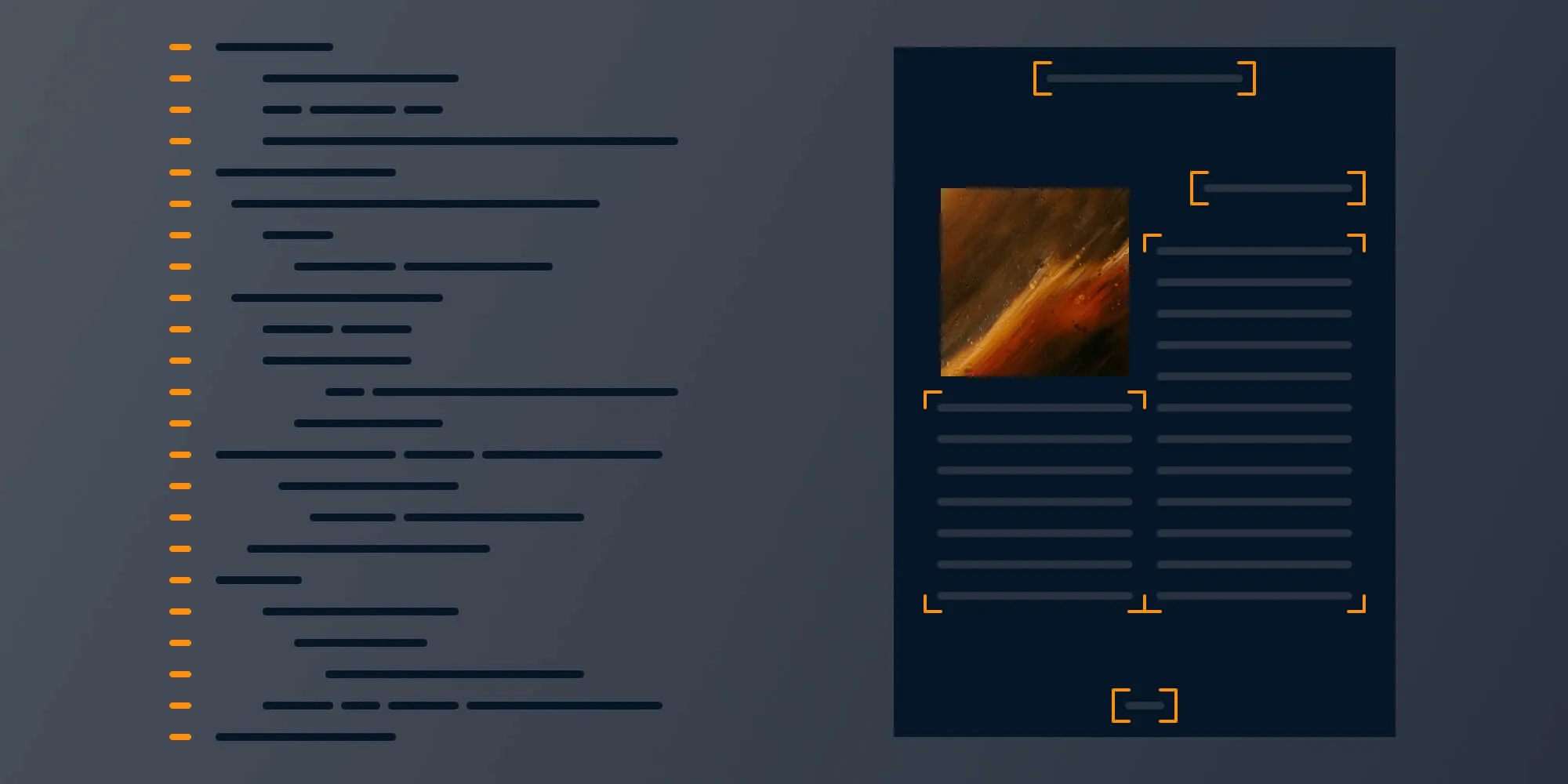Is a PDF a vector file? Understanding vector vs. raster in PDFs
Table of contents

A vector PDF uses mathematical formulas to define graphics, so they scale without losing quality. Raster images get pixelated when enlarged, but vector elements stay sharp at any size. PDFs can contain text, vector graphics, and raster images in the same file. Whether your PDF is vector or raster depends on its contents — this article details how to identify what you have.
This guide explains what a vector PDF is, how it differs from raster images and text, how to identify each type, and why it matters for print quality, file size, and performance.
Is a PDF a vector file?
PDFs aren’t inherently vector or raster files. They’re containers that can hold text, vector graphics, and raster images in the same document. What matters is whether your content is stored as scalable vector paths and real text, or as flattened bitmap images.
A PDF is considered “vector” when most of its content — diagrams, lines, logos, and text — exists as vector objects and selectable text rather than embedded bitmaps. Many real-world PDFs are mixed: vector text and diagrams combined with photos or scanned pages.
What is a vector PDF?
A vector PDF contains graphical elements — such as lines, curves, shapes, and fills — described using mathematical formulas instead of pixels. These vector elements are resolution-independent, meaning they can be zoomed or printed at any size without degrading quality.
Origins: The PDF imaging model
Vector graphics in PDFs are based on the PDF imaging model, which itself descends from Adobe’s PostScript language. PostScript was designed in the 1980s to produce scalable, device-independent output for laser printers — and this DNA carries into modern vector PDFs.
What are the three core PDF content types?
PDFs can store three types of content: text, vector graphics, and raster images. Each type has different storage methods, display characteristics, and use cases.
1. Text
Text in PDFs is more than just visual glyphs on a page — it’s stored semantically. A text object in a PDF includes character codes (not just shapes), font references, and precise positioning. This makes it selectable, searchable, and accessible.
PDFs use a sequence of operators to display text, like BT (begin text), Tf (set font), Td (move position), and Tj (show text). Fonts can be embedded or referenced externally, and a ToUnicode map allows character codes to be interpreted and extracted correctly.
Why it matters:
- Enables copy-paste, text search, and screen readers
- Small file size
- Required for accessibility and compliance (e.g. PDF/UA)
Downside: If the text isn’t embedded correctly or appears as a scanned image, it’s no longer accessible as “real” text.
2. Vector graphics
Vector content is composed of paths — lines, curves, and shapes — defined using mathematical coordinates. These are rendered using PDF graphics operators like m (move to), l (line to), c (curve to), and painting operators like S (stroke), f (fill), and B (stroke and fill).
These shapes scale without quality loss because they’re defined mathematically, not as pixels. Common uses include:
- CAD drawings
- Technical illustrations
- Logos and design assets
- Charts and shapes generated via code
Why it matters:
- Stays sharp when printed or zoomed
- Small file sizes for complex drawings
- Can be modified programmatically via APIs
Challenge: Too many small path segments can slow down rendering (e.g. GIS or blueprint files).
3. Raster images
Raster images are bitmaps — grids of pixels representing scanned content or photos. In PDFs, they’re stored as XObjects with metadata like /Width, /Height, /ColorSpace, /BitsPerComponent, and /Filter (compression type).
Filters include:
/DCTDecode→ JPEG compression/JPXDecode→ JPEG2000/FlateDecode→ ZIP compression
When included on the page, the image is referenced and placed using a transformation matrix and the Do operator.
Why it matters:
- Needed for scanned documents and photos
- High-resolution images increase file size significantly
- Fixed resolution — looks pixelated when zoomed
Best practice: Downsample to target DPI during optimization.
Visual and technical comparison
| Feature | Text | Vector graphics | Raster images |
|---|---|---|---|
| Resolution | Infinite | Infinite | Fixed (e.g. 300 DPI) |
| Selectable | ✅ Yes | ❌ No | ❌ No |
| Searchable | ✅ Yes | ❌ No | ❌ No |
| File size | Minimal | Compact (depends) | Large (depends on res) |
| Zoom behavior | Sharp | Sharp | Pixelates at high zoom |
| Editable | With care | Redraw needed | Replace or overlay |
How text, vector, and raster appear in a PDF
The following examples show how text, vector shapes, and images are represented at the PDF operator level, giving insight into how each content type is drawn on the page.
Text object
BT/F1 12 Tf100 700 Td(Hello, PDF) TjETThis sequence draws the words “Hello, PDF” at coordinates (100, 700), using font F1 at size 12.
Vector drawing (rectangle)
100 100 m200 100 l200 200 l100 200 lhSThis draws a stroked square. These operations define paths and outline them with the current stroke color.
Image (XObject reference)
/Im0 DoThis tells the PDF viewer to paint the image resource named /Im0, which is defined elsewhere in the document as a stream of encoded pixels.
When does vector vs. raster in a PDF matter?
Whether your PDF is mostly vector or mostly raster affects:
- Print quality — Vector graphics stay sharp at any size, while raster images can look blurry when scaled.
- File size — Vector-heavy PDFs can stay small even for complex drawings, while high-resolution raster scans get large quickly.
- Zooming and viewing — Vector content looks crisp in viewers when users zoom in to inspect details.
- Rendering performance — Drawing lots of vector paths versus large images has different performance characteristics, especially in web and mobile apps.
If you’re building your own viewer or document workflow, you want a rendering engine that:
- Handles vector, text, and raster content correctly.
- Preserves vector quality when displaying or processing PDFs.
- Lets you inspect and work with PDF content programmatically.
That’s exactly the kind of scenario PDF SDKs like Nutrient are designed for.
How to tell if a PDF is vector or raster
If you’re asking “How do I tell if my PDF is vector?”, there are a few quick checks you can do in any standard PDF viewer. These methods work whether you created the PDF yourself or received it from someone else.
Below are two reliable ways to see if your PDF is mostly vector content or if it’s just raster images (like a scan).
1. Zoom test
This is the fastest way to *check whether your PDF is vector or raster. Zoom in to 400–800 percent. If lines and text stay crisp and sharp, they’re being drawn as vector paths. If they become blocky and pixelated, that content is stored as a raster image instead.

2. Text selection
Try highlighting text or individual elements. If you can select them, they’re likely vector shapes or actual text. If not, the page may contain only raster images such as scanned pages.
These methods are especially useful for automating document classification, compliance checks, or content optimization pipelines.
What if I need to convert my PDF to a vector file?
If you’ve confirmed your PDF is mostly raster (like a scanned blueprint) but need vector output for print or CAD, you have a few options:
- Reexport from the source app if you still have the original design file.
- Use specialized conversion tools to trace raster artwork into vector paths.
- Automate conversion with an SDK for batch processing or workflow integration.
Real-world example: Vector stamp annotations
Digital stamps like approval marks, seals, or signatures work best as vector annotations.
A raster stamp (PNG or JPEG) becomes blurry when zoomed or printed at high resolution. It also increases file size. A vector stamp uses shapes and text that stay sharp at any size and support transparency without extra overhead.
Vector stamps are standard in legal, architectural, and compliance workflows where document quality matters. See our guide on vector stamps for implementation details.
Vectorization vs. rasterization: PDF/A conversion
PDF/A is the ISO-standardized format for long-term document archiving. When converting standard PDFs to PDF/A, any content that doesn’t comply with archival requirements must be transformed into something that does. This often involves choosing between vectorization and rasterization.
Vectorization
Vectorization converts incompatible elements (certain fonts, shadings, or transparencies) into shapes and paths. This keeps the document scalable and compliant with PDF/A requirements. The result is usually smaller with better visual quality.
Rasterization
Rasterization flattens complex or incompatible content into bitmap images. This guarantees visual consistency but increases file size and loses text searchability.
| Method | Output type | Advantages | Drawbacks |
|---|---|---|---|
| Vectorization | Paths, curves | Scalability, print quality | Rendering precision required |
| Rasterization | Pixel images | Simpler implementation | Larger files, no selectable text |
Summary: Why vector content matters
Knowing the difference between vector and raster content helps you build better document systems. Vector PDFs offer:
- Sharp output at any size for print and display
- Better long-term accessibility with PDF/A
- Smaller file sizes while keeping visual quality
How Nutrient supports vector and raster PDF workflows
Nutrient SDK handles both vector and raster PDFs with full fidelity.
OCR that makes any PDF searchable
Nutrient’s OCR engine adds searchable text to any PDF. Use cases include:
- Scanned or photographed documents
- PDFs where text was converted into outlines or images
- Post-conversion content that lost searchable text
After PDF/A conversion, fonts may become curves or images. Nutrient’s OCR restores searchable text to these documents.
Vector support for engineering workflows
Nutrient converts DWG and DXF files to vector PDFs while preserving:
- Colors, layers, fonts, and metadata
- Full vector fidelity from CAD exports
- Print-ready quality for technical drawings
Read our Q4 2024 SDK updates.
PDF conversion and optimization APIs
- Convert multiple file formats to vector PDFs
- Batch process OCR, conversion, and optimization
- Extract text, images, and metadata from PDFs
- Generate PDF/A documents for archival
Nutrient’s PDF SDK supports C#, Python, JavaScript, and other languages with APIs for rendering, conversion, and validation.
Conclusion
Text, vector, and raster content each have distinct roles in PDFs. Developers need to understand these differences to build effective PDF workflows for web display, archiving, or automation.
Nutrient PDF SDK provides APIs to detect, convert, OCR, and process both vector and raster documents with full control over quality and output.
Try Nutrient PDF SDK to render, edit, inspect, and convert vector PDFs at scale.
FAQ
A PDF can be vector, raster, or a mix of both. The format itself is a container — it can store text, vector graphics, and raster images in the same document. A “vector PDF” is simply a PDF where most of the important content is stored as vector objects and real text instead of flat images.
Vector PDFs store shapes and lines using paths, while raster PDFs store pixel-based images. Raster images lose clarity when zoomed in, whereas vector elements stay sharp.
Yes. Most real-world PDFs mix text, vector graphics, and raster images on the same page. For example, a technical manual might use vector diagrams and live text on top of a scanned background image. When people call a document a “vector PDF,” they usually mean the primary content — diagrams, drawings, and text — is stored as vector objects, not just as a flat image.
Zoom in to 400–800 percent and see how the content behaves. If lines and text stay smooth and sharp, that part of the PDF is vector-based. If they become blocky and pixelated, that content is raster. You can also try selecting text: If you can select and copy it, the file isn’t just a raster scan.
Vector PDFs stay sharp at any zoom level or print size because they’re defined as paths and shapes instead of fixed pixels. That makes them ideal for things like technical drawings, floor plans, and diagrams where users need to zoom in and still see crisp details.
Yes. Vectorization is often used during PDF/A conversion to preserve scalability and reduce file size. This ensures documents are legible and usable in the long term.







